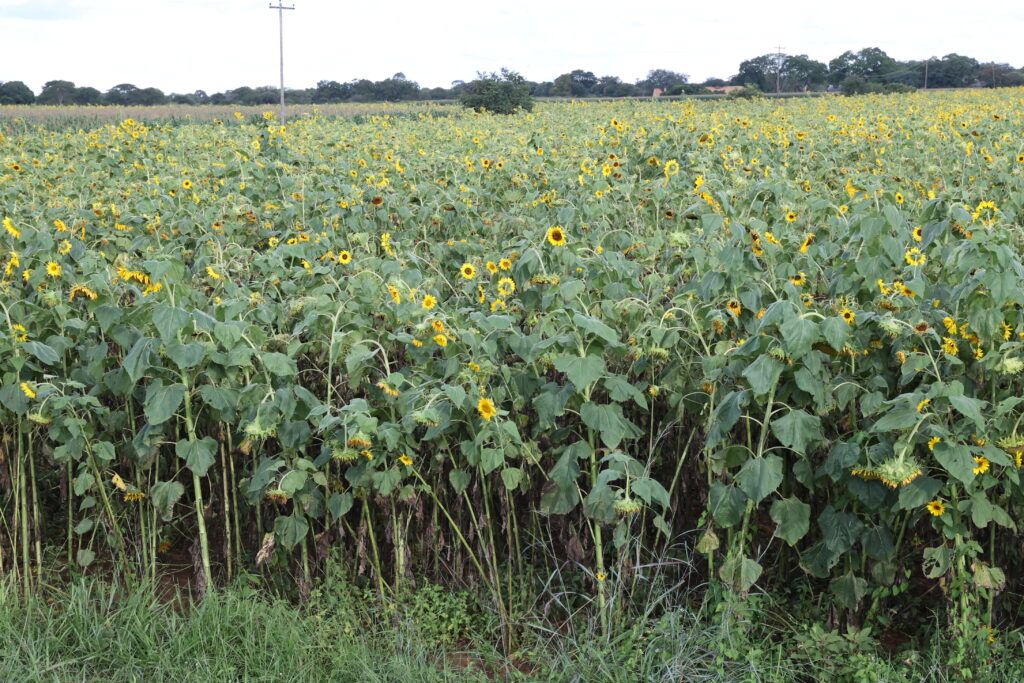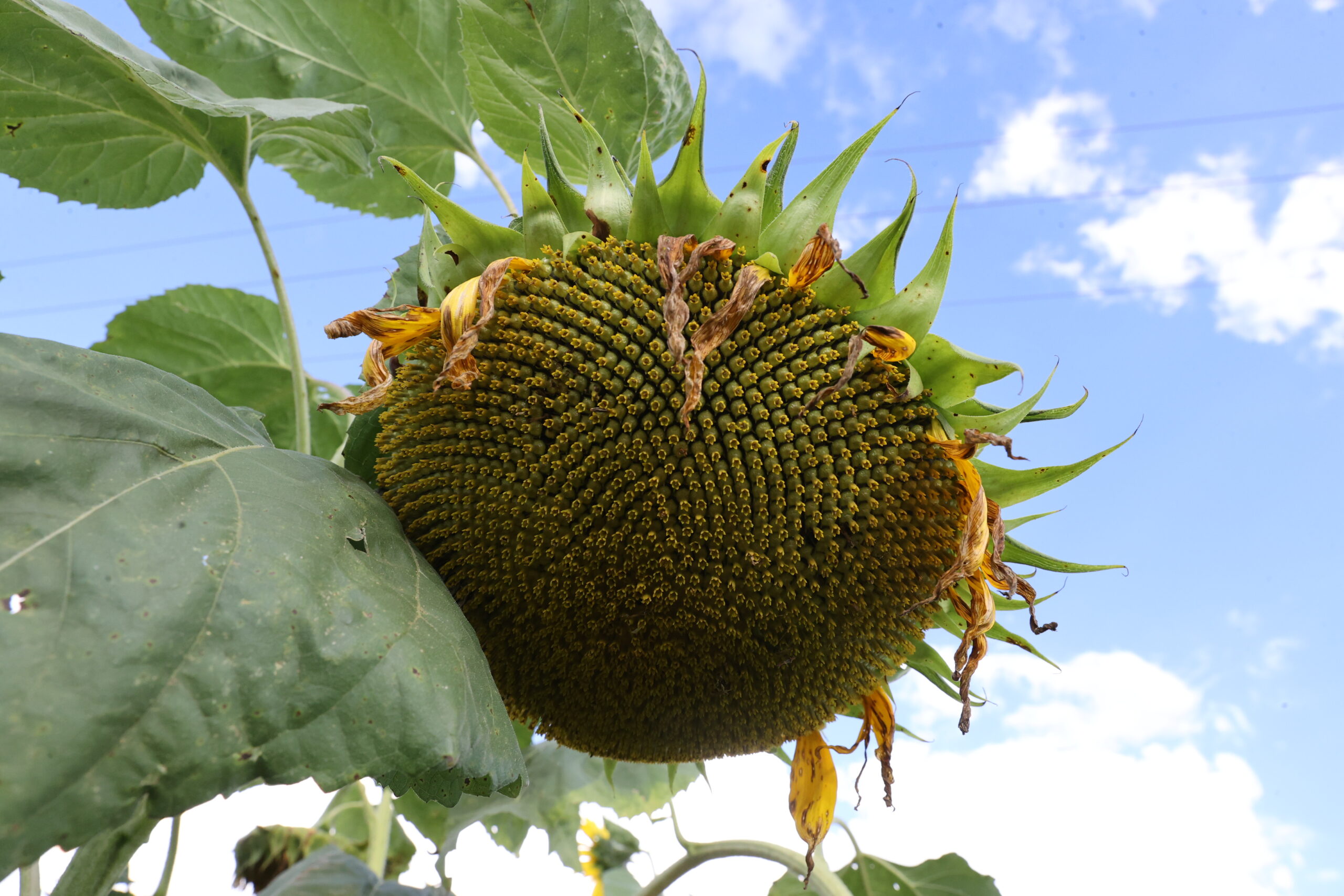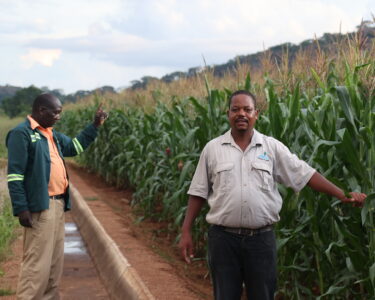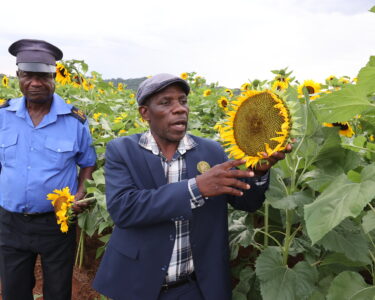Over the years, there have been whispers in the dark that Zimbabwe is about to take its historic land reform programme to another level in terms of production and productivity. Those who have gone around the country vow that, indeed, Zimbabwe has turned the corner while those who spend most of their time on social media are still living in the past where they see the programme as a chaotic exercise that will one day be reversed.

The Zimbabwe Farmers’ Union (ZFU) secretary general, Paul Zakariya, leads an organisation that boasts over 380 000 members and, in the course of his duties, has crisscrossed the country seeing the land reform programme in action. The soft-spoken Zakariya is convinced, given the Second Republic’s unwavering support to the agricultural sector, “the time for Zimbabwe is now”. In this Q&A with our Editor-in-Chief Munyaradzi Huni, Zakariya — a passionate community and rural development practitioner — speaks from the heart. Read on . . .
Q: Can you briefly tell us about the ZFU? A brief history and its membership?
A: The ZFU is a membership-based organisation that is now about 87 years old. The Masvingo or Fort Victoria Farmers’ Association (as it was called then) was the basis upon which farmers started coming together. These included farmers in Fort Victoria, now Masvingo, and others from Chivi, Gutu and other surrounding areas. Because of the hostile political environment back then, racial segregation was rife to the extent that black farmers were not allowed to mix with their white counterparts. So there were two rival movements representing similar interests.
At independence, those representing black farmers in the communal areas were referred to as the National Farmers’ Association of Zimbabwe (NFAZ). Those who were kumatenganyika [purchase areas] — the small-scale commercial farmers — were represented by the Zimbabwe National Farmers’ Union (ZNFU). The white farmers, on the other hand, belonged to the Commercial Farmers’ Union (CFU).
In August 1989, the two black formations came together to form the Zimbabwe Farmers’ Union (ZFU). The union is registered by an Act of Parliament which is called the Farmers’ Licences and Levies Act. It is by statute that the ZFU is constituted.
By virtue of its background, the ZFU represents all farmers — peri-urban farmers, old resettlement schemes and those on irrigation schemes. There is no segregation whatsoever. Even whites were free to join us. So the ZFU is very broad in terms of its membership. As we speak, ZFU’s active membership is upwards of 380 000 farmers right down to the village level.
In terms of its organisational structure, ZFU has producer groups in the villages who have their own representative structures at ward and district levels. The district structures coalesce into the provincial structures, which in turn lead up to the national structures. At the national level we have what we call the National Council, a management board and the presidency at the apex.
We have deliberately put in place separate structures for women and the youths in line with our gender policy which compels us to take into account diverse views and concerns.
We also have commodity associations at various levels in order to integrate diverse interests and views right up to the national level. The chairperson of the national women’s organisation sits on the ZFU presidium. Our goal is to capture as many voices as possible. We also have a very robust secretariat, headed by myself as secretary-general, based in Harare. We have offices in every province and a prominent presence in the districts.
Q: What is the mandate of the ZFU?
A: Our mandate, first and foremost, is to represent the interests, rights and welfare of Zimbabwe’s diverse farming community. From a policy point of view, we do a lot of advocacy work involving issues to do with producer prices and policies to ensure a conducive operating environment.
We also interface with the private sector in terms of inputs availability and affordability, among other things. Just recently, in 2022, we assumed another responsibility, that of promoting agriculture as a business. We need to pursue robust business development strategies at both farm and union level. We are past the stage of talking about farming as a business. We want to demonstrate it on the ground. We want to protect our members from making losses. It is for this reason we have devised a new five-year strategy which we put in place last year.
Q: We will get to the strategy in due course. Are your members happy with the way you are executing your duties?
A: As you will probably know, it’s very difficult to please everyone. Late payments, for instance, give farmers sleepless nights. As we speak, there are some farmers who delivered their wheat [to the GMB] in October [last year] and are still to be paid. As a union, we always do our best to assist our members. Some will probably dismiss this as failure on our part, but there are some things over which we have no control. But whatever the outcome, we always keep our members informed.
Q: It’s now almost 22 years since the land reform programme, how would you rate the performance of the new farmers?
A: As in any major development, things don’t happen overnight. The land reform programme, particularly the agrarian side of it, was never going to be an event. It is a process and there are so many variables and factors we need to take into sccount, such as access to finance, prices of inputs and their availability; technical know-how; access to technology and equipment, etc. The white former commercial farmers had unlimited access to finance. Not only local finance, but also offshore finance, which has since dried up because of the illegal sanctions imposed on Zimbabwe.
Our farmers have had to rely on local funding which, because of limited resources, is quite expensive. Things were particularly tough during the 2004-2008 period given the uncertainty in the farming sector and stand-offs between the new farmers and the “old school” comprising white farmers.

Since then, Zimbabwe has made giant strides in terms of production and productivity on these farms. Over the years, the new crop of indigenous farmers has gone out of its way to amass as much technical know-how as they can. The government has also come in a big way in terms of financing, mechanisation, infrastructure development, irrigation schemes and inputs.
We have now surpassed the production figures recorded before the advent of the land reform programme. Tobacco has hit very high records. We are actually targeting to produce 300 million kg a year. This season Zimbabwe produced a record wheat harvest, the first time this has happened in 56 years. We may have challenges in paying our farmers, but in terms of productivity, we are seeing an upward trend. This trajectory can only be sustained. Failure is not an option.
Q: Would you say in terms of productivity we have turned the corner now?
A: I would say yes — a big yes. We used to average less than a tonne per hectare in the past 15-20 years. That has been our story in terms of cereals in general, but look, we have a record harvests now. For wheat, we are talking of a whopping 2,5 tonnes per hectare on average, which means there are some farmers who are actually producing more. As for maize, we are averaging 1,5 tonnes per hectare. Some farmers in the communal areas are producing more than seven tonnes per hectare. But that’s not all; we now have 25-tonne clubs, 15-tonne clubs, etc, on A2 farms. So with time, we can do better. The sky is the limit.
Of course, there are still some teething problems here and there. For instance, when we talk about Pfumvudza, it is common for some armchair critics to demonise it for the simple reason that they don’t understand it. Basically, Pfumvudza is another term for conservation farming, the practice of preserving soil moisture for the purposes of bridging future dry spells. You dig holes in the ground that serve as a “storeroom” for nutrients, which can be carried over to the next season. Come the next season, you are not putting in as much as you did the year before. In other words, you are being more efficient in terms of inputs utilisation. So, yes, in terms of productivity, we are certainly on the right path.
Q: There are some who are still stuck in the past who continue to say the land reform was chaotic and so on. Some even think the land reform exercise can one day be reversed. What is your comment?
A: Let me start by addressing the second part of your question. Definitely it’s a No, No, No. In fact, NEVER! You see, when you know you are dealing with an issue close to the hearts of the people who are not only productively utilising the land, but fought for it, there is definitely no going back. The people are fully aware that they were allocated prime land in order to address the imbalances in land ownership. I don’t see any sane black person who is willing to surrender his or her piece of land. Honestly, after 22 years, who would even think of going back [to the overpopulated and barren communal areas]?
Let’s come to the “chaotic” part. For years, the derogative word jambanja was used to describe the land reform exercise as the work of a group of rabble-rousers. So, yes, there could have been excesses here and there, in terms of destruction of property even to the extent of physical violence. Certainly, all that was never intended. In any event, such cases were isolated. But, on the whole, a radical shift in terms of access to productive farmland was achieved.
This was a noble exercise. Black people were oppressed for many years. They had been condemned to the [less fertile] reserve areas, the ones we call kumaruzevha for too long.
Q: There are allegations that some of the new farmers are not fully utilising their land. From a ZFU point of view, how true are these allegations?
A: Yes, there are some farms that we believe, as ZFU, we need to have a re-look at. Perhaps the farms are too big for the tenants. There are some farms that have been abandoned. Somebody was allocated a piece of land and maybe their fortunes took a dip and they relocated to some other province or even left the country. There are some farms that were run down and infrastructure destroyed. For those farms to get back into production, they will require large doses of capital. But where does that kind of money come from, given the illegal sanctions on Zimbabwe?

Look, it’s easy to blame the farmers for underperforming. But, let’s face it, some of the reasons why these farms are not performing, have nothing to do with the farmers per se, but the lending environment. How can a farmer be expected to borrow money in an environment where interest rates continue to shoot up because of limited resources and scarcity of “patient capital”?
Agriculture requires short-term borrowing, medium-term borrowing and long-term borrowing. For the short term, we are talking of working capital valid for 12 months. Your medium-term loan can be anything up to five years. For infrastructure, you need long-term borrowing, of up to plus/minus 30 years, which we do not have. This is what we call “patient capital”.
Another bone of contention is that we have not yet made significant inroads into horticulture. We need to do more. We are not doing too badly, because our export figures are going up. It’s just that we are failing to meet demand, which means there is so much untapped potential out there.
Q: Do you think the Second Republic is doing enough to support the new farmers?
A: Yes, yes! Under the First Republic it was a case of black versus white. But now we have seen a radical shift with the coming of the Second Republic. Joint ventures are now permissible under the Ministry of Agriculture. Efforts are also underway to bring closure to the land reform programme by compensating white former commercial farmers for farm improvements [to the tune of US$3,5 billion].
Centre pivots are on the way. We have a lot of investment coming to the farms. Is it fair to the farmer? Is it fair to the country? That is another story. May be it’s a process as well as we learn the ropes and as we see the investors coming. We only hope that skills and assets are being transferred to the land holders.
Q: Government has come up with a raft of schemes to support farmers. There are some people who think the government is spoiling the farmers. These critics are saying government assistance has created a dependency syndrome among the new farmers. Do you share these views?
A: There is a very interesting angle to it. Until the land reform programme, all these facilities (offshore funding, local lending, etc) were available [to white farmers]. Now, all that is gone. Honestly, what do we expect government to do? Government will move in as the only available alternative. This is the fact of the matter.
It’s a tragedy, though, for our farmers to take this gesture from government and abuse it by not paying back. It has always been in our human nature to expect things free of charge. Even loans are treated as gifts.
There is a lot of investment in terms of farming as a business, which explains why we have this as a buzzword in our new strategy document. ZFU believes in honouring contracts, which is something we have always encouraged our members to do. If you are contracted to deliver X tonnes of tobacco, wheat, cotton, etc, you deliver without fail to the contractor. Don’t forget, contract farming is another means of financing agriculture.
Q: Do you think we are going to get to a point where farmers really understand that farming is a business?
A: We will always have subsistence farmers. That we cannot run away from. I will also hasten to say, sometimes we think that the mere act of burying seed in the ground and watch it grow makes one a farmer. This is not it.
We all grow something at some point, but certainly we are not farmers. You may have taught your child or helped your child with his/her homework, but that does not make you a teacher. You may have bought aspirin from a pharmacy, but that does not make you a doctor. We really have to understand that farming is a calling.
You cannot turn anyone into a farmer. A genuine farmer is the one who decides based on tangible facts and figures that there is a market for this or that crop. If I produce, say, potatoes I can deliver them to Mbare Musika or some other market and make money. This farmer is now thinking like a businessperson.
But that does not mean, there is no place for peasant farmers. Yes, there will always be some enterprising subsistence farmers, who grow more than they require. They will retain some for their own consumption and sell the surplus. This has been the practice since time immemorial.
In the communal areas, our farmers have always produced excess to their requirements. So in order to save them the long trip to Harare to sell their maize, silos were built in their respective areas. It is a myth that white farmers used to produce more than the communal farmers. About 80% of the grain that ended up in the Strategic Grain Reserve actually came from communal farmers. That history is well documented.
However, we would like to educate our farmers on the need to work together. By this I mean smallholder farmers can work independently on their small plots but come together for the purposes of marketing. This is another way of lifting themselves out of poverty. There are many similar models that we can look at to assist our farmers to come out of poverty.
Q: Some critics have accused new farmers of ill-treating their workers. Has this issue been brought to your attention?
A: Farmworkers are represented by their respective unions under the auspices of the National Employment Council for the Agriculture Industry, of which the ZFU is a stakeholder. Together, we recommend minimum wages for the different sub-sectors of agriculture. This is one of the platforms we use to resolve pressing labour issues. As you know, no salary or wage is ever enough. The important thing is that we meet and discuss these issues on a monthly basis in line with prevailing inflationary trends.
Q: The illegal sanctions imposed on the country have adversely affected the economy. How much do you think these sanctions have affected agriculture specifically?
A: The mere fact that we do not have direct access to offshore funding from the International Monetary Fund (IMF), World Bank, etc, is clear evidence that our farmers are hamstrung. This is compounded by the fact that some farmers cannot repatriate the proceeds of their exports into the country through certain banks. We have seen banks, some in neighbouring South Africa, that have facilitated the repatriation of these export proceeds being slapped with punitive fines. All this is clear evidence that we are losing out because there are some markets that we cannot access.
Thanks to Brexit and, to some extent, Covid-19, there is increased demand for food commodities worldwide and some of these restrictive conditions are being nicodemously relaxed, thereby opening up new markets for our produce.
However, the imposition of sanctions has not dampened the indomitable spirit of black Zimbabwean farmers. We continue to produce and to increase our capacity in terms of land utilisation, hectarage productivity per unit area, etc.
Q: Besides sanctions, what are some of the challenges the new farmers are facing?
A: The short answer is obviously finance. With the advent of the Russia-Ukraine war, we have seen an over-reliance on imported components for our agricultural inputs. A good example is fertiliser, whose prices have gone through the roof. The price of imported chemicals has also gone up thereby pushing production costs very, very high
Add to that the cost of money, i.e. working capital. If you borrowed from any of the local financial institutions, you were until recently being charged 200% interest. The lending rate has since been revised downwards to around 150%, but it still too high for agriculture. If, as a farmer, you have no access to farming inputs through one scheme or another, self-financing is going to be a tall order.
Q: Now that you have mentioned the Russia-Ukraine war, what lessons do you think Zimbabwe can learn from it?
A: When the conflict broke out in February last year, I was worried sick because we had a wheat crop to take care of and most of our fertilisers were coming from that part of the world. The short-term solution was to buy up whatever was available on the market and horde it for the upcoming winter cropping season.
But we needed a long-term solution, which came with the commissioning of the Zimphos plant for basal fertilisers. Much to our relief, Sable Chemicals also scaled up their production capacity, so did several other companies that are into farming inputs manufacturing. Although we still require more imports of ammonia, half the battle is already won.
If there is one major lesson we have learnt, it is that if we are to be self-sufficient in food we cannot afford to rely on imports for our inputs. We are also exploring the use of organic fertilisers, especially for our smallholder farmers. This shift will not only reduce production costs, but also ease the import burden on the fiscus. The farmers themselves are also coming up with alternatives, which shows that as a people, we are never short of ideas.
Q: The ZFU came up with a Strategic Plan 2022-2026, can you shed more light on this plan?
A: Isn’t it they say, failing to plan is planning to fail? Operating without a blueprint is like whistling in the dark. So we wanted to be very focused by way of consulting our constituencies and the various publics that we work with, such as government, development partners, inputs suppliers, off-takers, financiers, etc. In consultation with our various stakeholders we came up with some key strategic pillars, notably capacity building of the ZFU itself with particular emphasis on the technical and financial aspects.
Also high on the list was advocacy, since farmers wanted effective representation when dealing with social policy issues. There have also been increasing calls by our membership for employment benefits such as medical aid, funeral cover, etc, to cushion them in times of need. Environment and gender issues are also topical.
Agriculture is advancing technologically the world over and we cannot afford to be left behind. Our young farmers are becoming tech-savvy, as they embrace smart or precision agriculture with its ability to detect moisture/nutrient content, among variables, at the click of a button.
The new ZFU strategy, as previously highlighted, is anchored on business development. Going forward, the emphasis will be on technical training and farming as a business. We have already prepared the relevant manuals for the different categories of our membership.
In the long term, our objective is to transform our commodity associations into bona fide business enterprises. We have already started the ball rolling by establishing a meat centre for our livestock producers. For grain farmers, we are pushing for the establishment of milling centres. Why should our farmers continue to sell their maize in their raw form? Why can’t they add value to it? There is no reason why we cannot grind our maize, package it and sell it directly from the farmer. That way they can earn more money for their upkeep and re-investment on their farms. We are happy because our farmers are moving in this direction in a big way.
Q: In recent months, there has been a lot of talk about food security and self-reliance. How far is Zimbabwe from being food secure?
A: I think we are very, very close. The 2020-2021 season was a very good one, despite some deficits here and there. But the bottom line is that we produced more than enough to take us this far.
Thanks to Pfumvudza, the majority of communal households are now food secure. It’s a journey, but with time we will get there. No doubt, there is a lot of training in conservation farming still to be done, but Agritex is doing a fantastic job. They are not just training farmers to produce, but to make money as well.
ZFU plans to do the same. It is our wish to see farmers making good returns and becoming more food secure. We want them to sell their excess produce to the market so that they have extra cash to invest on their farms. We are getting there.
Another burning issue is irrigation. Zimbabwe has the highest number of water bodies in the region, but we are yet to see full utilisation of these water bodies for agricultural purposes. This year we are celebrating good rains in the northern parts of the country. But that cannot be said for the southern parts, where farmers are crying for rains when so many water bodies are lying idle.
There is a need for us to invest massively in irrigation. Not the communal irrigation schemes that we are used to, but irrigation facilities at household level. I would like to see every communal household that has received support under the Pfumvudza programme being equipped with a micro-irrigation kit. Draw the water, dig canals and do whatever it takes to bring the water closer to the people. If there are not enough water bodies, the 35 000 boreholes that are being drilled throughout the country can come in handy. That is my dream.
I am sure we can take a leaf from the rural electrification programme. Isn’t that they take electricity right to the doorstep of the households? The same should apply to these micro-irrigation kits I am taking about. Our farmers in the communal areas should be capacitated to produce crops all year round. This is the best way of ensuring food security.
Q: Do you think the agricultural sector is contributing enough to the country’s Gross Domestic Product (GDP)?
A: Agriculture is the backbone of our economy. Yes, mining hogs the limelight, but we cannot afford to ignore the importance of agriculture. Around 2009-2010, when our agriculture hit a turbulent patch, it still contributed about 40% to the GDP. So you can imagine its contribution now given recent developments in the farming sector.
Agriculture will always be the heartbeat of Zimbabwe’s economy. After all, we are blessed with good soils, abundant water, a very conducive climate and, above all, hardworking farmers.
Q: Do you think the private sector is doing enough to complement efforts by government to grow the agricultural sector?
A: The private sector is indispensable to agriculture, but I think they can do more in terms of financing, providing a market for our produce and adding value to the wide range of locally produced products. In short, the private sector has a fundamental role to play. We just need come up with the right policies to accommodate them.
Q: Climate change is a reality. What is your organisation doing to prepare farmers for this change?
A: Climate change is a huge, huge threat. We have a climate change response strategy as Zimbabwe but we need to put some teeth into it. We need to operationalise it. As a starting point, we need to engage the farmers on their understanding of climate change. They will tell you, for example, that there used to be a river here, but it’s stopped flowing. In most cases, the farmers will tell you that it is no longer possible to predict when the rainy season will begin or when it will end. These, to me and my ZFU colleagues are practical definitions, not these high-sounding resolutions emanating from climate change conferences that mean nothing to the farmers.
Our desire as ZFU is to see irrigation given top priority. Dependence on rain-fed agriculture is not going to take us anywhere. Just look at the last season, it’s by the Grace of God that we managed to pull through. And all this because the previous season was a good one.
Thank God, Zimbabwe did not suffer as much as our neighbours South Africa or Zambia, who have had to import grain from as far afield as Mexico, etc. Even some South American countries, which rely on rain-fed agriculture, are also beginning to feel the heat of a changing climate.
Q: Year in and year out, we hear farmers complaining about issues to do the producer prices of maize, wheat, etc. What do you think is the long-term solution to this problem?
A: We definitely need to sit down as value chain players and listen to the farmers’ concerns, like how much they spend from the land preps right up to harvesting. It is really up to us and them to come up with an accurate assessment of their production and other costs. We should not leave this to some armchair economists.
We really need to consult the constituency, so that we come up with a viable prices. Even if it means we have to pay our farmers the highest producer price in the world, so be it. This is the nature of our economy. We cannot compare ourselves to other countries. Our top dressing fertiliser, for example, is selling at US$65-US$70 per 50 kg bag. It’s a different story altogether in South Africa or Zambia. So comparing ourselves to them is an exercise in futility. We have to look at a long list of variables, such as the cost of money.
Q: Looking into the future, like five years to come, what do you think will be the outlook of the country’s agricultural sector?
A: By and large, the policies that have been put in place promote robust growth in agriculture. Here, I am referring to primary production, value addition and beneficiation, import substitution, etc.
So in five years’ time, I expect our Buy Zimbabwe initiative to blend seamlessly with agricultural production. If we continue like we are doing now, I see a food secure Zimbabwe that will actually be exporting grains and finished products across the globe. We are going to see incredible growth. The time for Zimbabwe is now.





